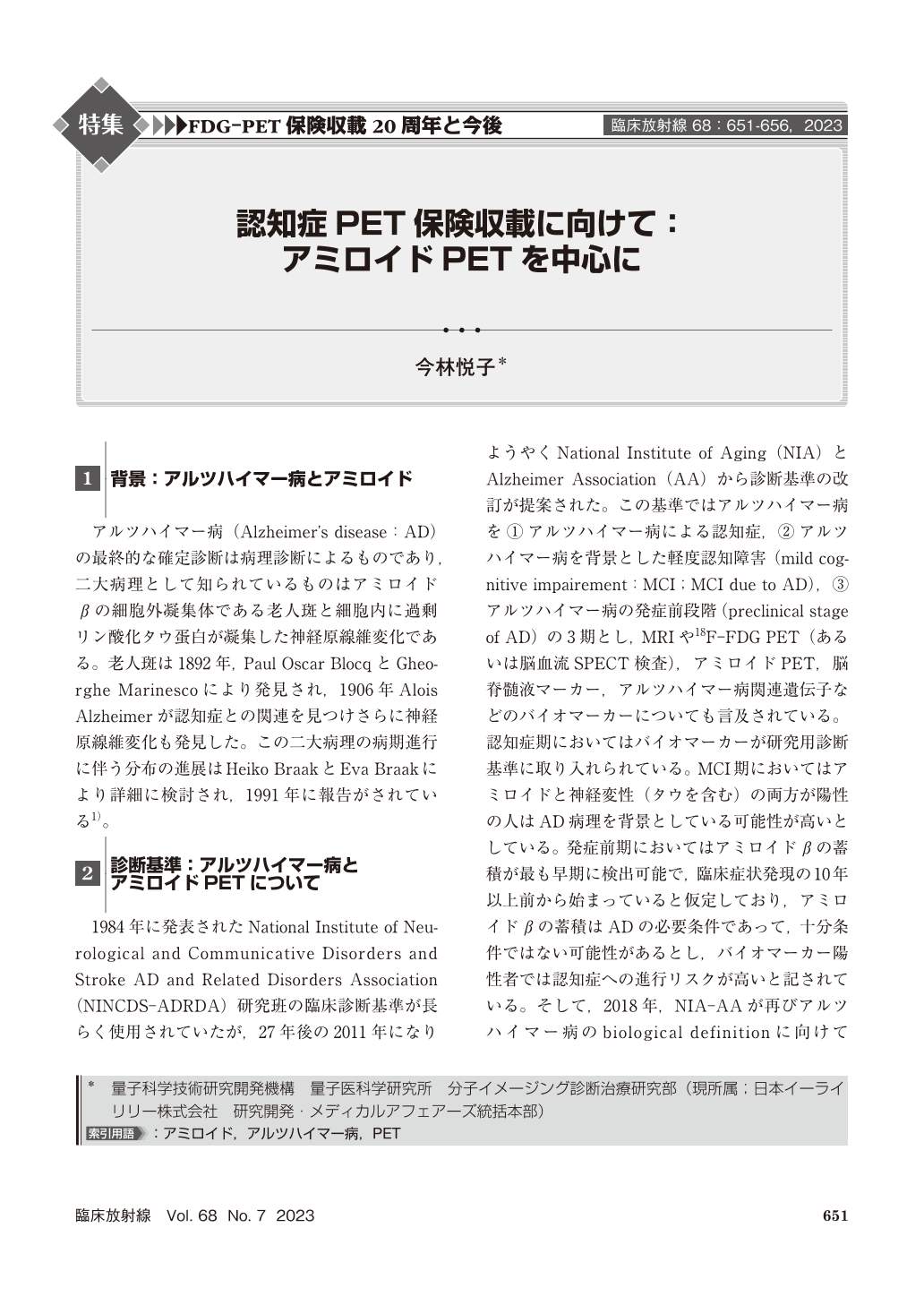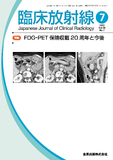Japanese
English
- 有料閲覧
- Abstract 文献概要
- 1ページ目 Look Inside
- 参考文献 Reference
アルツハイマー病(Alzheimer’s disease:AD)の最終的な確定診断は病理診断によるものであり,二大病理として知られているものはアミロイドβの細胞外凝集体である老人斑と細胞内に過剰リン酸化タウ蛋白が凝集した神経原線維変化である。老人斑は1892年,Paul Oscar BlocqとGheorghe Marinescoにより発見され,1906年Alois Alzheimerが認知症との関連を見つけさらに神経原線維変化も発見した。この二大病理の病期進行に伴う分布の進展はHeiko BraakとEva Braakにより詳細に検討され,1991年に報告がされている1)。
Amyloid PET is a well-established and pathologically evidence-based imaging. Because amyloid accumulation is one of the two major pathologies of Alzheimer’s brain, unless with a disease modifying therapy, it has been considered difficult to use expensive amyloid PET for clinical use routinely. In this context, the FDA’s approval of aducanumab in June 2021 has raised hopes that amyloid PET will finally become available for clinical use. However, because the cost of disease-modifying drugs is also high, the indication is expected to be a small. Therefore, we still need to take into consideration the ethically appropriate use of amyloid PET for elderly people who might be stay for many years without symptom but with amyloid positivity.

Copyright © 2023, KANEHARA SHUPPAN Co.LTD. All rights reserved.


